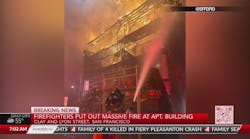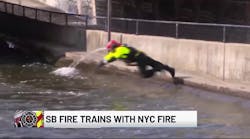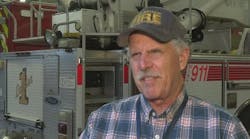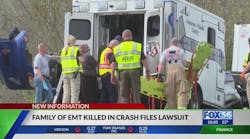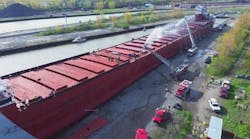As we said, the next factor to be considered in any survey of risk is the life hazard to the occupants of those target hazards in the various fire management areas. Always remember that life safety is a complex issue and as such is subject to much guesswork.
Of primary importance in any risk survey is the number of occupants and their ability to safely exit an endangered building without assistance. In making an assessment of life risk, the factors of numbers, age, condition and activities of the occupants MUST be taken into account. Certain age groups, such as the very young or the elderly, may require a far greater commitment of personnel to insure safety. And statistics have already identified that these are problem areas within our population.
Consideration must also be given to the impact of building construction type upon the personal safety of building occupants. Does a person have the same measure of safety in an older wooden building as in newer buildings? Will a building with enclosed stairways have a higher degree of safety than one with open stairs? These and similar questions must be addressed.
Recent fire studies tell us that human behavior is an interactive series of actions which are both predictable and unpredictable. Outside stress(es) can cause dissimilar behaviors in different people. The fire administrator analyzing life risk must take this into consideration.
Any survey of your community must consider the occupancy classifications of the buildings being studied. The dangers of a dynamite warehouse are more obvious than those of a residential dwelling. But where do more people die?
According to the latest available National Fire Protection Association (NFPA) statistics, people are still dying in residential occupancies. For this reason, any plan designed to protect a community must consider this fact. Consider the risks inherent in each target hazard surveyed. Then extrapolate this downward for your average hazard, whatever it may be. It is normally conceded that if you can deliver enough protection for your target hazards, you can handle the normal risks in your community.
There is another impact beyond the actual danger to people's lives which must be considered. You must reckon the effects that a major fire in a target hazard occupancy could have upon your community. The harm must be analyzed and appropriate measures taken to protect against this loss. In order to accomplish this, several factors must be studied:
- The number of jobs that may be lost.
- The effects of lost income and prop- erty taxes paid to the community.
- Effect of jobs lost upon citizens.
- Loss of community pride.
While these all seem like fairly vague concepts, each must be studied. You must determine the concrete effect of each aspect. Pride in one's community can have a decidedly positive effect upon the level of fire protection deemed necessary for optimal protection within that community.
The loss of property tax revenue, jobs for its citizens and the effects of these things on the populace can also be powerful selling points to increase a fire department's level of resources and personnel. It is the wise fire chief who finds every possible reason for a community to support the protective efforts of the fire department. As we have often stated during our financial studies, it is the wise fire chief who arms himself with three elements: facts, figures and friends.
Here is a case where you will have to assemble your fire risk figures through the judicious use of each of these critical areas. It is your friends who will help you gather the facts and figures necessary to properly study fire risk in your community. It is also their assistance which can help you sell the whole package to local government.
In our next edition, we will look at the actual fire risk calculations you will need to make.
Harry R. Carter, Ph. D., a Firehouse® contributing editor, is a battalion chief with the Newark, NJ, Fire Department and past chief of the Adelphia, NJ, Fire Company.